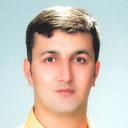The oxidative and antioxidative status of simple febrile seizure patients.
Słowa kluczowe
Abstrakcyjny
OBJECTIVE
To evaluate the oxidative status following a seizure in children experiencing a simple febrile seizure.
METHODS
The cross-sectional study was conducted at Harran University, Turkey, between January and September 2011. It comprised 32 paediatric patients who, within the preceding 8 hours, had experienced a seizure due to upper respiratory tract infection and had been diagnosed with simple febrile seizure, and 30 healthy children as the control group. Blood was taken from the patients 8 hours after the seizure. Total oxidant level and Total anti-oxidant level were measured according to the Erel technique and the oxidative stress index was calculated. Data was analysed using SPSS 11.5.
RESULTS
The mean values of the total oxidant level and the oxidative stress index of the cases were found to be significantly high compared to the controls and the total anti-oxidant level was found to be significantly low (p < 0.01, p < 0.01, p < 0.03 respectively).
CONCLUSIONS
The increased total oxidant level and decreased total anti-oxidant level resulting in increased oxidative stress associated with febrile seizure patients may increase the risk of experiencing febrile seizures.


